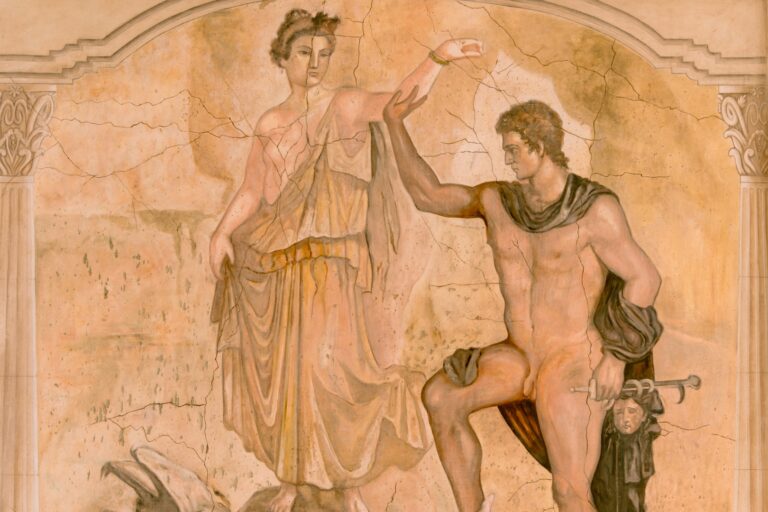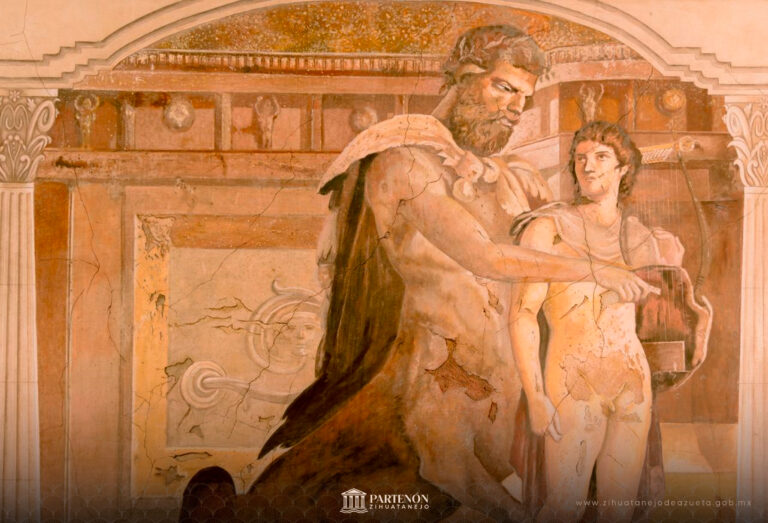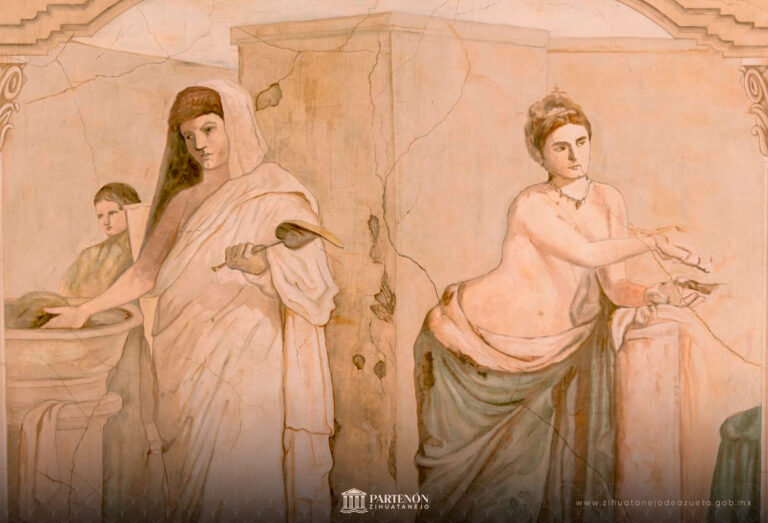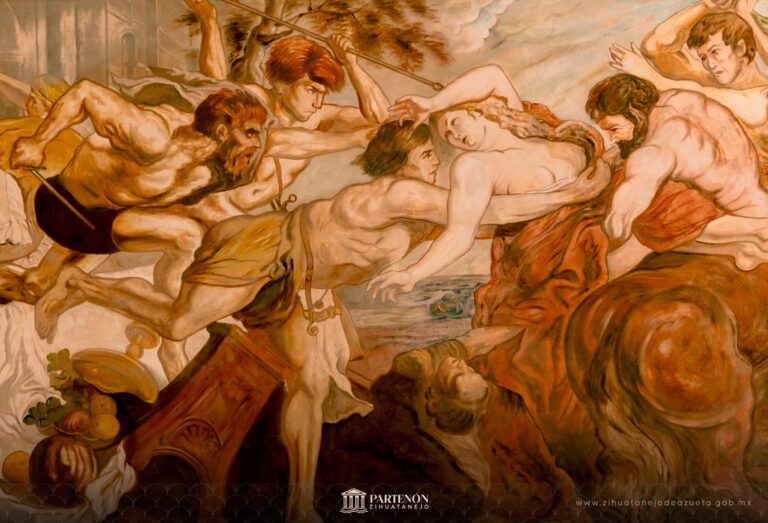The abduction of Hippodamia
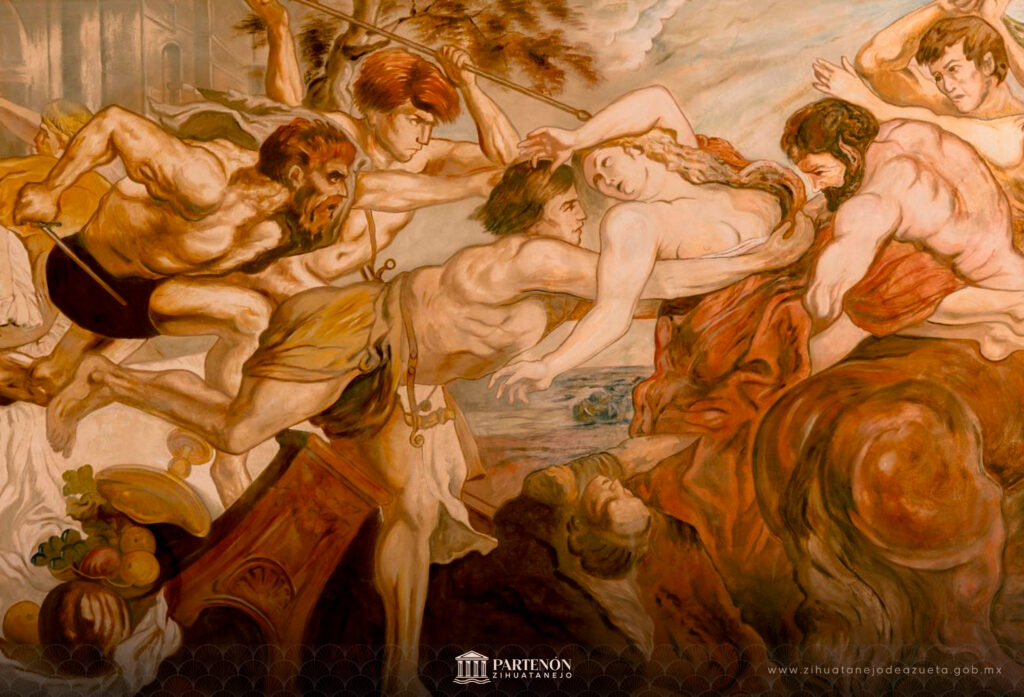
Mural based on the artwork of Peter Paul Rubens (1577-1639), a German Baroque artist. His work recreates the perfect Baroque, both compositionally (interplay of colors, shapes, and light) and thematically. At the time, his paintings were aesthetically deviant: he often depicted sensual female figures. They are full of dynamics, colors, and emotionally charged scenes.
Hippodamia, on her wedding day with Piritus, was abducted by one of the guests, Eurytus the centaur. This is how Ovid narrates it in Metamorphoses in book XII (210-335): «(…) For you, the most beastly of the beastly, Eurytus, your heart burned as much for the wine as for the sight of the bride, and a drunkenness reigned that doubled the lust. Suddenly the tables are overturned and confusion sows in the banquet and the newlywed is abducted by force, grabbed by the hair. Eurytus grabs Hippodame, a living image of the city sacking. The house is filled with the screams of women (…)».
This is one of the largest canvases and with the greatest number of characters that form part of the Torre de la Parada (This was a hunting lodge located on the outskirts of Madrid, on Monte de El Pardo, not far from the El Pardo Palace. Around 1635-1640 it was one of the main architectural and decorative projects of King Philip IV, a great hunting enthusiast, who wanted a rest house in the area for long hunting days) where the movement, drama and great variety of people and postures are different from others.
This myth is one of the abductions represented in the Torre de la Parada, which is completed with others such as that of Europa, Proserpina, Ganymede or Deianira (both the canvas and the sketch are currently lost). The composition of the Rape of Deianira is known thanks to an anonymous work on panel that follows the original, preserved in the Prado Museum in Madrid, Spain.
The paintings for the Torre de la Parada were made between 1636 and 1638, following the correspondence between Cardinal Infante Don Fernando, governor of Flanders at the time of the commission, and his brother King Philip IV.
The decoration of the Torre de la Parada, a project for which other artists such as Velázquez also participated, was the largest commission Rubens received from Philip IV. Beginning in 1636, more than sixty artworks were sent from Antwerp to Madrid for this pleasure house located in the Montes del Pardo. Most of the scenes narrated the passions of the gods, as described in the Metamorphoses of the Roman poet Ovid and other classical sources. To carry out such a broad project, Rubens made small sketches on wood, capturing the moral essence of the stories and the attitudes of the characters. These sketches served as the basis for the final canvases.

